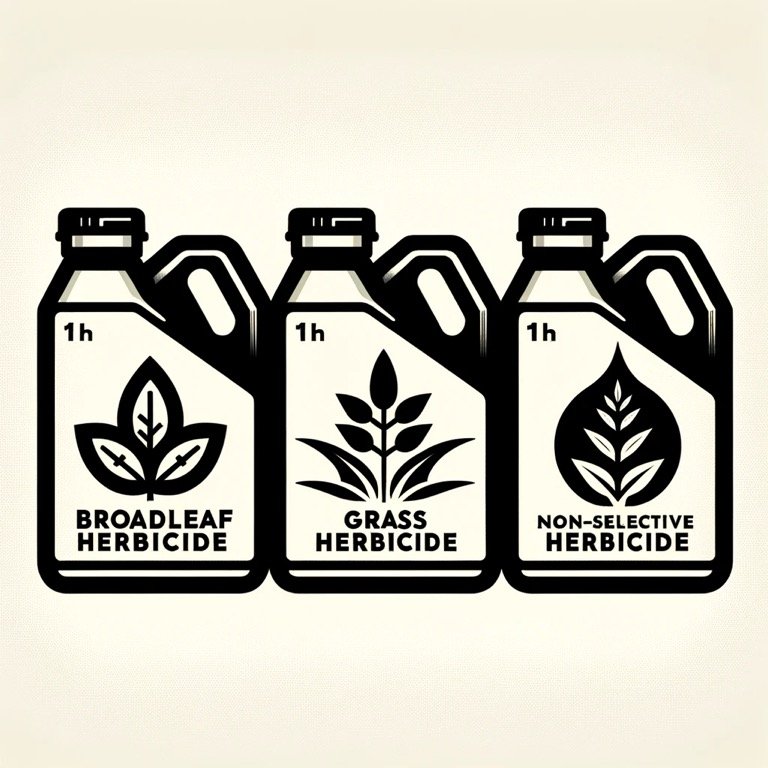Herbicide Types and Plant Responses: A Closer Look
Chemical and pollution injuries to plants can significantly impact plant health and are crucial to abiotic disorders. These injuries are often the result of herbicides and pollutants, which can vary in their specificity and mode of action. Understanding the different types of herbicides and their effects on plant groups is essential for accurate diagnosis and management.
Types of Herbicides and Their Impact
Broadleaf Selective Herbicides:
Target Group: These herbicides are designed to target broadleaf plants (dicots) while being less harmful to grasses (monocots).
Impact: Dandelions, clovers, and other broadleaf weeds are susceptible. However, non-target broadleaf plants in the vicinity can also be affected, showing signs like leaf curling, discoloration, and stunted growth.
Grass (Monocot) Selective Herbicides:
Target Group: These are formulated to control grassy weeds without affecting broadleaf plants.
Impact: Grass species will exhibit yellowing, reduced vigor, and eventual dieback, whereas broadleaf plants remain largely unaffected.
Non-selective (Broad Spectrum) Herbicides:
Target Group: These herbicides affect a wide range of plants, irrespective of whether they are monocots or dicots.
Impact: Broad-spectrum herbicides are particularly damaging in mixed plant settings, causing widespread injury or death to various plants, including valuable ornamentals and crops.
Pre-emergent Herbicides:
Target Group: These are applied to soil to prevent the germination and growth of weed seeds.
Impact: While they are not designed to kill existing plants if misapplied, they can adversely affect the germination of desired plant seeds and harm the root development of young plants.
Post-emergent Herbicides:
Target Group: These are applied directly to visible weeds.
Impact: They can harm any plant they encounter, not just weeds. Careful application is crucial to avoid drift or runoff to non-target plants.
Evaluating and Diagnosing Herbicide Injury
Visual Symptoms: Look for discoloration, leaf curling, stunted growth, or abnormal growth patterns.
Timing and Pattern of Injury: Patterns of damage can indicate exposure, such as uniform damage (possible soil application) or localized damage (spray drift).
Plant Types Affected: Knowing which plants are impacted can help identify the herbicide type (selective vs. non-selective).
Pollution Injury to Plants
Pollution from industrial activities and vehicle emissions can also cause significant plant damage. Common pollutants include sulfur dioxide, ozone, and nitrogen oxides. Symptoms vary from interveinal chlorosis and necrotic spots to premature leaf fall and stunted growth.
Management and Prevention
Proper Identification: Accurate chemical or pollution injury diagnosis is vital for effective management.
Avoiding Drift and Runoff: Careful application of herbicides, considering weather conditions and proximity to non-target plants, is essential.
Soil Testing: Before using pre-emergent herbicides, soil tests can help determine the appropriate product and application rate.
Buffer Zones: Establishing buffer zones can protect sensitive areas from pollution and chemical exposure.
In conclusion, evaluating chemical and pollution injury to plants involves understanding the types of herbicides, their specific targets, and their impacts. Careful application, accurate diagnosis, and appropriate management strategies are vital to preventing and mitigating these abiotic disorders.
Sources for additional reading:
"Herbicide Injury to Garden Plants." Horticulture and Home Pest News, Iowa State University Extension and Outreach, 2024, hortnews.extension.iastate.edu/herbicide-injury-garden-plants.
"Herbicide Damage to Landscape Plants." Home & Garden Information Center, Clemson Cooperative Extension, 2024, hgic.clemson.edu/herbicide-damage-to-landscape-plants.
"Herbicide Damage – Wisconsin Horticulture." Wisconsin Horticulture, University of Wisconsin-Madison Division of Extension, 2024, hort.extension.wisc.edu/herbicide-damage.

